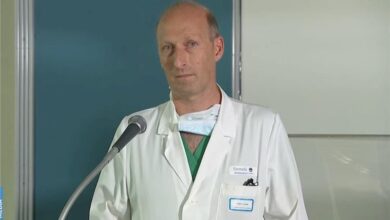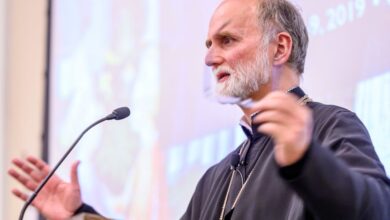Mexican bishops submit ‘Indigenous liturgical adaptations’ to the Vatican for approval
 Pilgrims from the Archdiocese of Tuxtla Gutiérrez, Diocese of Tapachula, and Diocese of San Cristóbal de las Casas in the Basilica of Guadalupe in May 2022. / Credit: Basilica of Guadalupe
Pilgrims from the Archdiocese of Tuxtla Gutiérrez, Diocese of Tapachula, and Diocese of San Cristóbal de las Casas in the Basilica of Guadalupe in May 2022. / Credit: Basilica of Guadalupe ACI Prensa Staff, Jul 27, 2023 / 08:30 am (CNA).
The Mexican Bishops’ Conference (CEM) has recently presented to the Vatican for its approval a series of Indigenous liturgical adaptations for the celebration of Holy Mass for the “original peoples” of the country.
Speaking with ACI Prensa, CNA’s Spanish-language news partner, Cardinal Felipe Arizmendi, promoter of the initiative and one of those in charge of making the presentation to the Vatican, explained that the adaptations have the objective of “advancing the progress of inculturation of the Church in the native peoples and of taking responsibility for the celebration of Holy Mass with some elements of these cultures.”
“It’s not a question of creating a new Indigenous rite but of incorporating into the liturgy various ways of relating to God of these peoples and which express the same thing as the Roman rite, but in its cultural form.”
Before the Indigenous liturgical adaptations were presented by the Mexican Church to the Holy See, they had been approved during the 114th plenary assembly of the CEM, held April 17–21. The adaptations were approved by 103 of the 105 voting bishops.
Arizmendi, bishop emeritus of the Diocese of San Cristóbal de Las Casas, pointed out that “the proposal at first was for San Cristóbal de Las Casas, but in the assembly on April 19, the Mexican episcopate asked that it be for all the native peoples of the country.”
San Cristóbal de Las Casas is a town in the southern state of Chiapas that has approximately 1.1 million Indigenous-language speakers, making up 27% of the state’s population.
The cardinal explained that the text was first sent to the Episcopal Commission for Liturgical Pastoral Care.
“They asked me to present the text and write it up, to present it to the assembly,” he said. “The vote in favor was last April 19. Now the proposal is already in Rome, at the Dicastery for Divine Worship, awaiting its final approval.” The document was delivered in June.
Incorporating elements ‘without harming the eucharistic liturgy’
After almost 18 years as bishop of San Cristóbal de Las Casas, Arizmendi joined a dialogue led by his successor — the current bishop of San Cristóbal de Las Casas, Rodrigo Aguilar — to present a text to the CEM assembly on the subject.
Arizmendi said that “there are certain elements, which have been studied, that can be incorporated into the Holy Mass without harming the eucharistic liturgy.”
“We were studying and seeing what things could be taken into the Catholic liturgy, what things yes, what things no,” he said.
The cardinal explained that “the creators of these initiatives are the same Indigenous people of San Cristóbal de Las Casas” who have similar experiences with other communities in the country.
There are 16 major Indigenous peoples in Mexico with a population over 100,000 speaking their native language.
In addition, Arizmendi and Aguilar had the support of the president of the Episcopal Commission for Liturgical Pastoral Care of the CEM, Víctor Sánchez, the archbishop of Puebla.
Aguilar said the cardinal asked him to accompany him to Rome to present it to the Holy Father and his collaborators as a liturgical proposal.
The Holy See received the project favorably, he said, although no decision has been reached yet.
The liturgical adaptations approved by the CEM include incensing, a “senior layperson” role, and ritual dance.
The incensing is done by a male or female thurifer using the Church’s normal incense.
Arizmendi explained that “the incensing is done by a layperson, man or woman, but that person does what the priest normally does. In this case, the priest blesses the incense, and it is not he who incenses the altar, the crucifix, the images, the offerings, but the layperson. They ordinarily do this outside of Mass, and we are taking it into the liturgy.”
The appointment of a “senior layperson” would also be incorporated as an addition to the new ritual. That person’s function will be to lead community prayer when appropriate.
Arizmendi clarified that “the senior layperson is a man or woman who in the communities is entrusted with praying for the community; it’s a traditional position and is ordinarily called that by tradition and is chosen by the community, because they trust him or her.”
Regarding ritual dance, the CEM document states: “Thanksgiving after Communion: On some occasions, thanksgiving is performed with a ritual dance (light movements of the body), accompanied by instrumental music typical of the place.”
This story was first published by ACI Prensa, CNA’s Spanish-language news partner. It has been translated and adapted by CNA.






